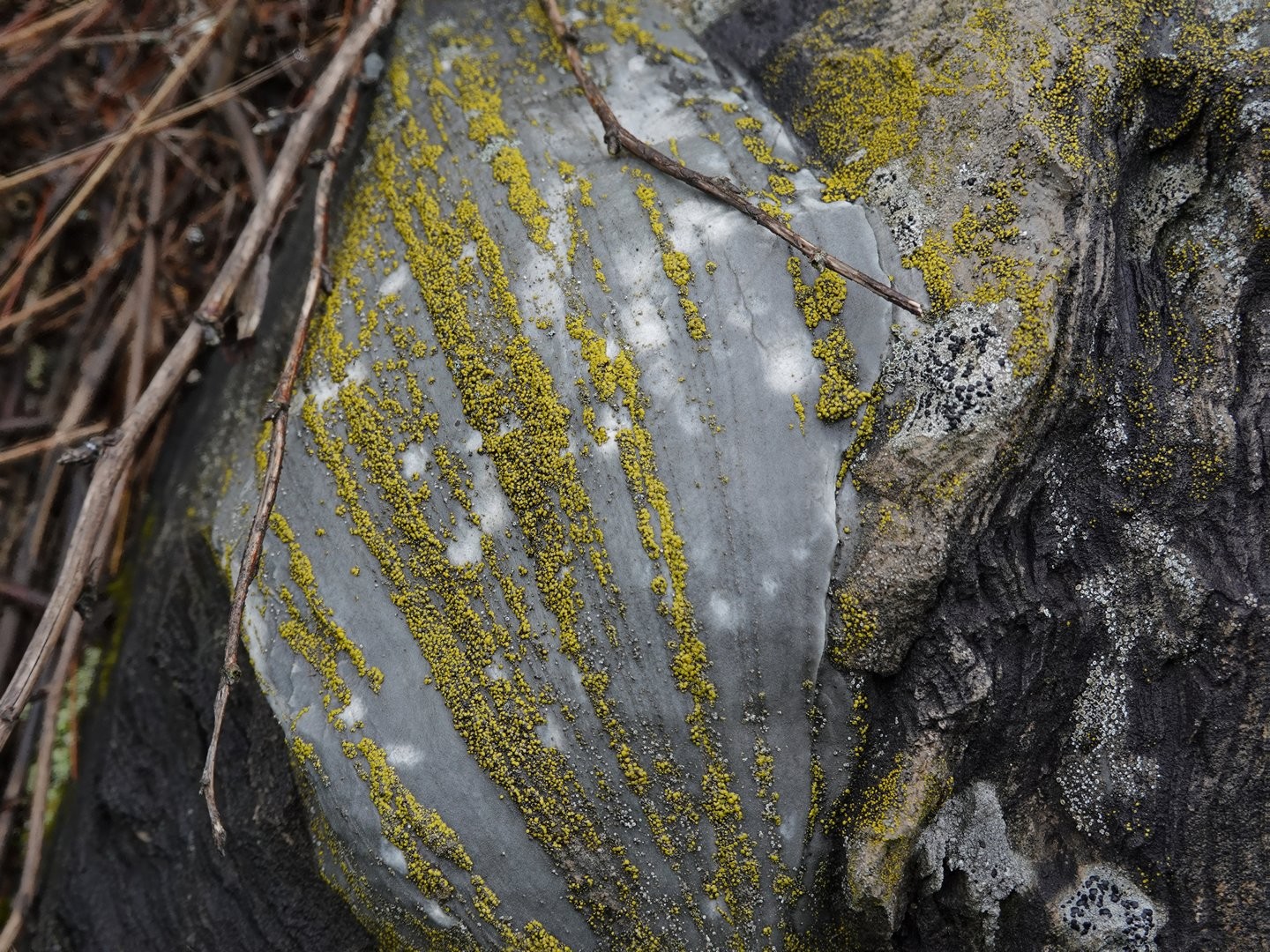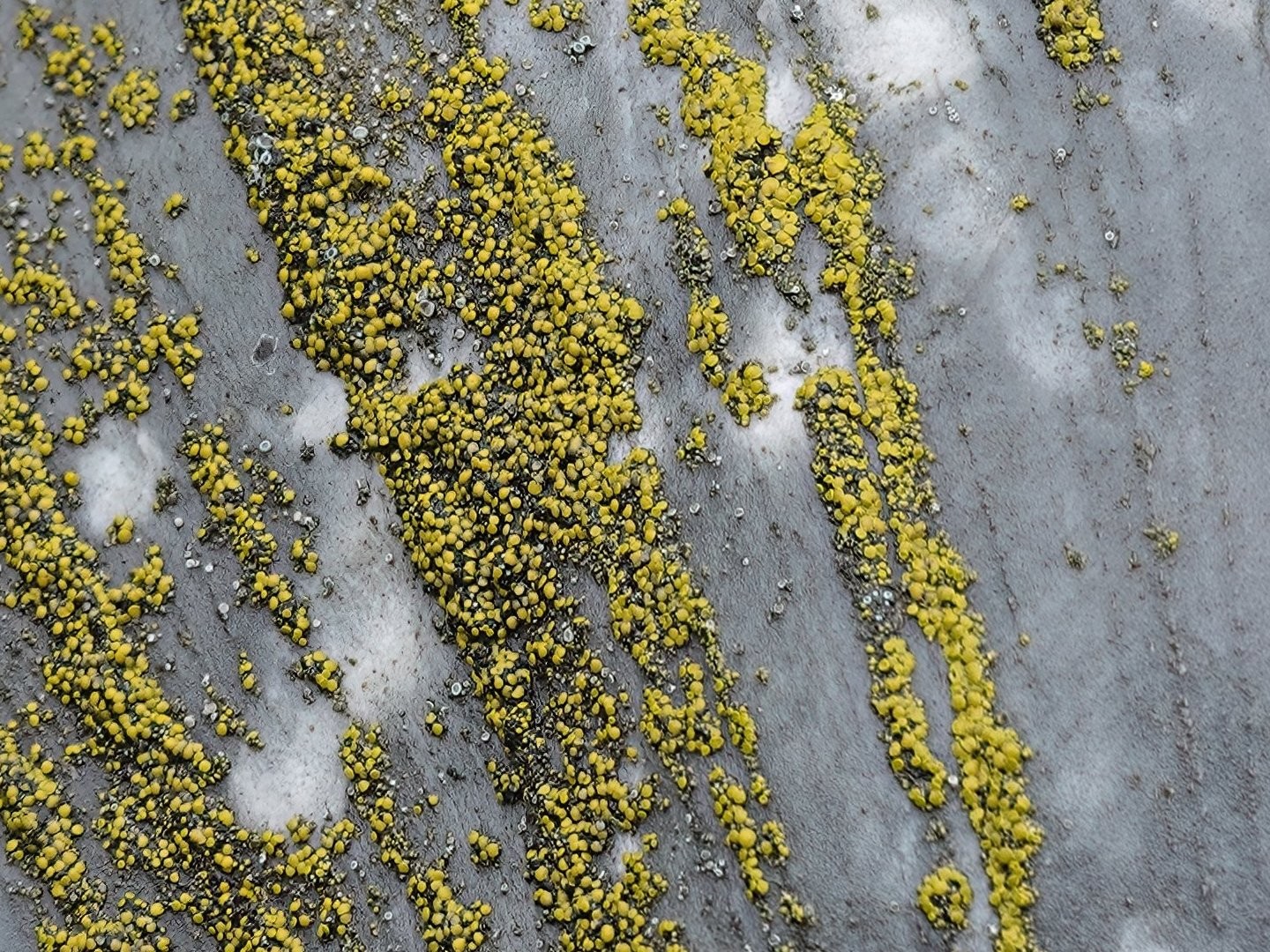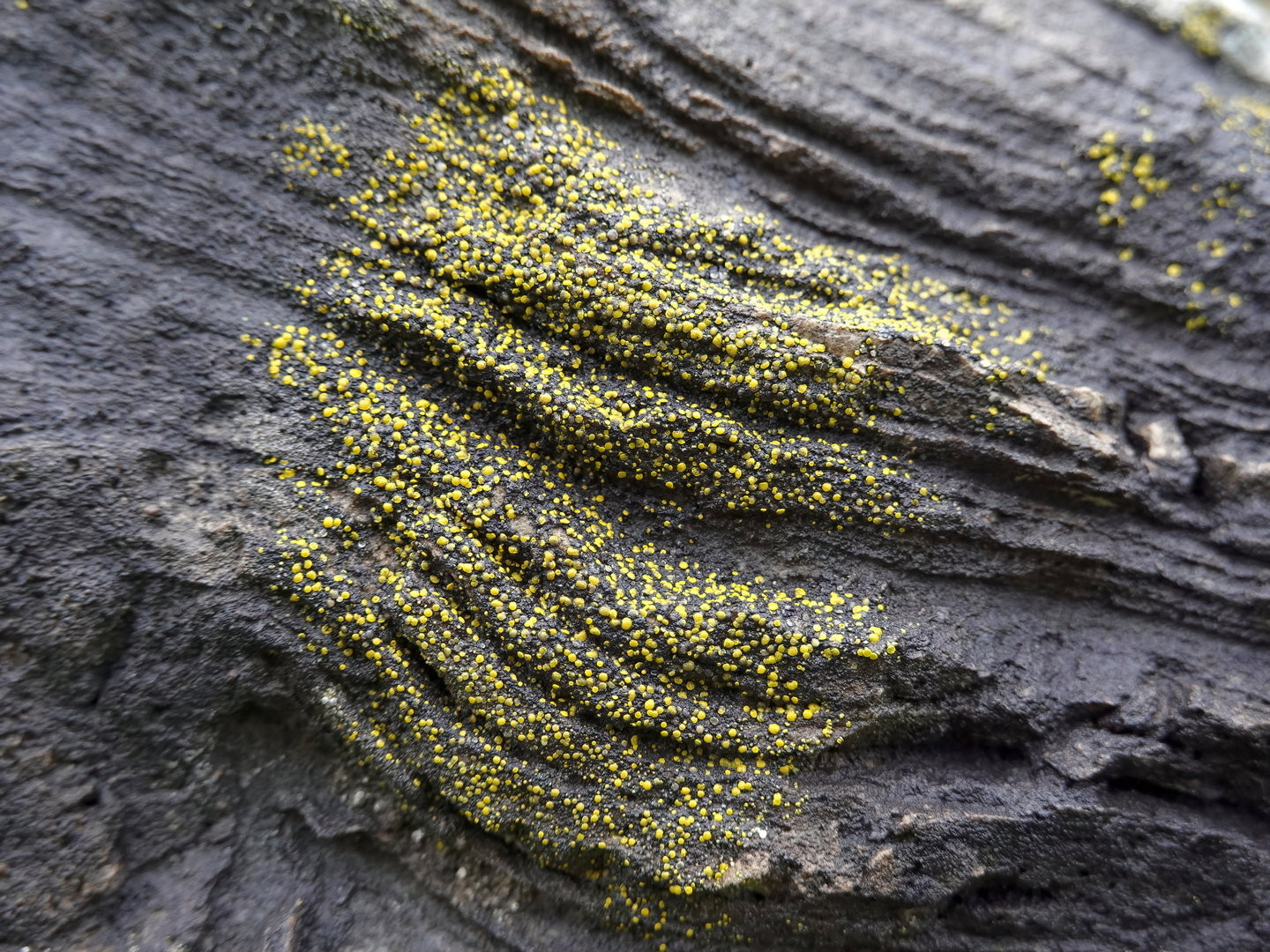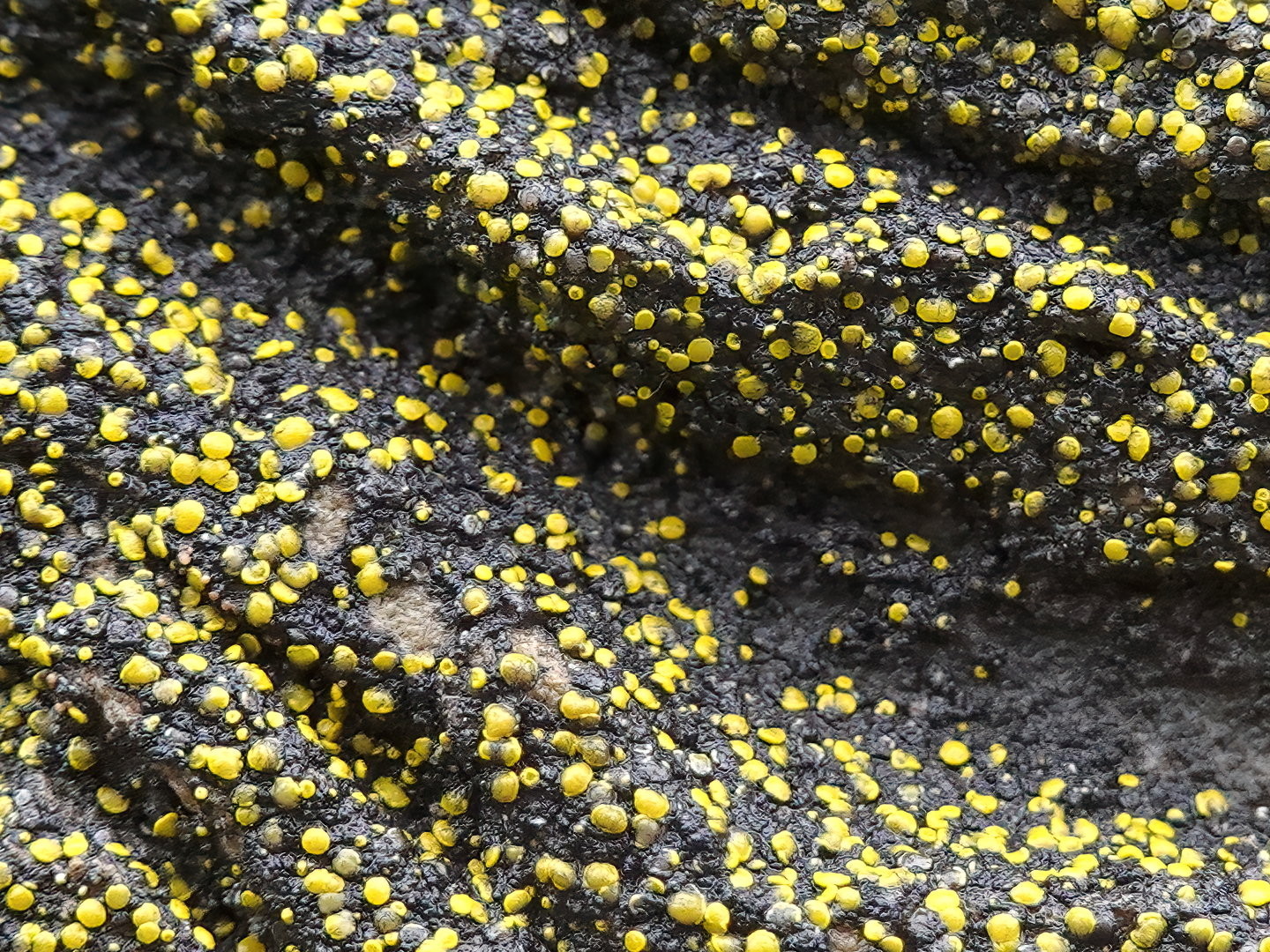#BabyGrand
Chris Nelson
- 1,015 Followers
- 953 Following
- 415 Posts
#BabyGrand
#Pride

Mina Caputo - Got Monsters Official Music Video - Directed by .NK.
That's why I'm makin six figures working three days a week.
#Smores





On two adjacent rocks I found this Hidden Goldspeck (Candelaria aurella) lichen.
It's interesting how this lichen only spreads out on one of the rocks in straight lines.
It is probably a matter of different layers of rock, of which I unfortunately understand nothing.
Does anyone know anything about this?
@Artemis201 Thank you for responding, and for the explanation!
@Still_Nimmy @Hagukh This is way cool!
Are you able to chip off a small piece of that rock for a detailed look?
My guess is either induration/impermeable zones in rock (lichen can't get a foothold, except in certain foliation zones that are different.
OR
Rock in some zones is super friable. Lichens only get a slight toehold, but then get sloughed off. Except in certain foliation zones.
Getting a fresh surface and then peek for mineral grains/foliations with 10x loupe might give clue.
Thanks for your respone!
Chip a small piece off this rock?
Hmm.. I'm not sure if I can get to the rock, there's a deep ditch in front of it if I remember correctly. I can take a look at it again, however, I don't have the tools to examine rocks, not to mention judge them.
@Hagukh @Still_Nimmy oh, bummer.
Is there a way you could a macro shot focusing on the surface grains of the rock? Your pix of the lichen were great! But maybe just a little higher resolution would help.
(It looks like the smooth rock was pretty fine grained, maybe flint?)
Any geological clues in area? (The free Rock'd app can tell you what types of rocks you expect here. Its a fun app. Recvomend.)
I'll try to get some macro shots in the next few days and let you know.
By the way, here's another shot, more from a distance... also very interesting, I think.
Area: Canadian shield
@Hagukh @Still_Nimmy OK. These pix helped. Can tell what is NOT the reason.
Can see some little tiny lines running down some of those rocks. Little dissolution runnels. They are cutting across the layering/foliation. They can trap water make little microhabitats. But...the lichen is totally ignoring those structures. So it is not based on surface water from microkarren.
@Hagukh @Still_Nimmy As a guess, you need fine-grained rocks to hold microkarren structures. So maybe this is an inclusion of limestone, dolomite, chert?, flint?.
Am thinking the mineral structure in that fine grained rock is so tight the lichen just can't break into it.
Thanks a lot!
Seems to follow the cracks where nutrients may be more accessible due to rain.
@Hagukh
I'm not a geologist per se but I did pay attention in early science class which covered different basic types of rock, one of which is sedimentary and that's likely to apply in this case. Sedimentary rocks were produced in layers because the initial sediment was deposited in layers, and I suspect your lichen found some of those layers tastier than the other layers.
When I did a search on that species of lichen, I found this li'l tidbit: "Substrate and ecology: mostly on calcium-rich rocks, sometimes on bark or wood "...and as it happens, sedimentary rocks are most likely to have layers that are calcium rich due to marine creatures with shells whose remains settled in any given layer of sediment.
Just a thought.